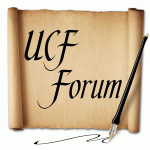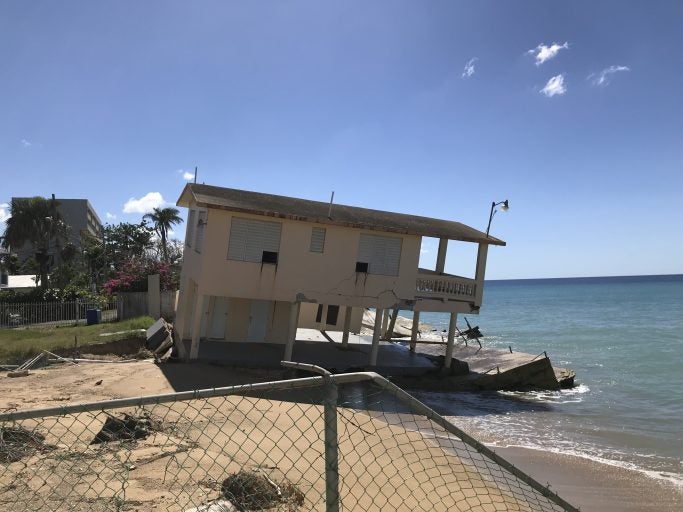I traveled to Puerto Rico in January, about four months after the island was devastated by Hurricane Maria on Sept. 20. I had much anticipation to see for myself how the island was doing, not only as my role as a disaster researcher, but as a member of the Puerto Rican diaspora and as a concerned son and friend.
Much can be said about the resilient, proud and innovative spirit of the Puerto Rican people. The warmth and attentive reception we received everywhere we went was indicative of that.
After the storm, my research interest in disasters and Puerto Ricans in Florida was augmented. Then-Provost Dale Whittaker asked me to lead the efforts on how UCF was going to address the situation, and different offices on campus, staff, faculty and students came together to work on the issue.

This amazing group of people was responsible for answering calls and providing information about admission criteria for students granted in-state tuition to attend UCF. UCF’s newly established Puerto Rican Student Association was essential in extending in-state tuition for students displaced by the storm.
My research interests were recognized by various news outlets and I was interviewed by local WMFE-FM, Canadian Broadcasting Corporation, and Telemundo and Univision national broadcasts, and inquiries for information came from reporters from CNN and Forbes magazine. Willingly or not, I had become the source of information for the situation happening on the island and its impact on the Central Florida community.
At the personal level I was also dealing with the aftermath of the storm. I was not able to communicate with my father in Puerto Rico for three weeks and my in-laws moved to my house in Orlando and stayed with us for almost four months.
Maria had influenced my life at all levels, but I still had not seen the devastation firsthand, and four months after the storm I decided it was time to visit and evaluate the situation for myself.
In the winding-down days of the 2017 fall semester, I met with my colleagues in the Department of Sociology – Professor Tim Hawthorne and post-doctoral scholar Hannah Torres – and we decided to visit Puerto Rico. Christine Munisteri also joined us as our drone pilot to survey the damage caused by Maria. We wanted to meet with faculty colleagues at the University of Puerto Rico and also with people in the community. After our UCF meeting, we contacted several groups and individuals, and the plan for our visit was set.
As we were landing at the airport in San Juan, my heart was pounding with anticipation. Was I ready to see the aftermath? Was I going to experience a completely different Puerto Rico?
At touchdown, the passengers starting clapping and making noise – this is a sort of an unwritten tradition of Puerto Rican passengers when they land on the island. As I stepped off the airplane, the airport operations were smooth, rental-car pickup was a breeze, and everything looked normal. We rented an apartment in Old San Juan because FEMA workers and other subcontractors had booked most of the hotel rooms.
As we drove from the airport to Old San Juan there were noticeable effects of the hurricane. Several traffic lights were not working, highways signs were facing the wrong way, and a billboard was destroyed. But overall, Old San Juan and the airport seemed to be OK.
However, as we visited other places around the island, the story was different.
The next place we visited was the island of Culebra to meet our friends Alfredo Montañez and Roberto Morales.
Culebra was affected by Hurricane Irma before it struck Central Florida and the coastal erosion was compounded by Hurricane Maria. Our friends showed us how coral reefs were damaged by the storm and how they wanted to collaborate to educate local children to protect this area and develop a resilient community to face the threats of future hurricanes and other climate events.
One of the striking issues in Culebra was the closure of its most famous beach, Playa Flamenco, as Maria had shifted the ocean floor and several bombs resurfaced from the island’s past as a bombing range for the U.S. armed forces. They closed the beach to make sure the bombs were not active; fortunately most of them were not.
We visited faculty and students at the Graduate School of Planning and the Center for Social Research at the University of Puerto Rico in Río Piedras who shared their experiences with Maria, the stoppage of classes, and the way they make sure their students continue their education and research even in the most trying conditions.
We visited Utuado in the center of the island to meet with a community group that shared their efforts in responding to the storm by organizing, communicating and activating their community. They also mentioned that some of the communities have been without electricity or potable water for 15 years or so, way before the impact of Maria.
Finally, we visited the University of Puerto Rico-Mayaguez and met with faculty members and students from various departments. We learned about the National Institute of Energy and Island Sustainability collaborative that was put together to address the most pressing issues of energy and sustainability on the island. We also toured the damage to the coastline in the northwest town of Rincón and saw firsthand the impact of Maria to this great tourist destination.
Overall, four months after Maria, Puerto Rico was still in response mode.
To the casual observer, if looked like Maria had just hit the island as debris was still on the side of the roads, downed power and telephone lines remained, and several places were without power or working with portable generators.
Puerto Rico is still in great need, and what we saw confirms it.
Even now, another three months after our visit, many of the conditions we experienced are still present.
I ask that others not forget Puerto Rico and we do everything we can to make sure that the island thrives again.
Fernando I. Rivera is an associate professor in UCF’s Department of Sociology. He can be reached at Fernando.Rivera@ucf.edu.
